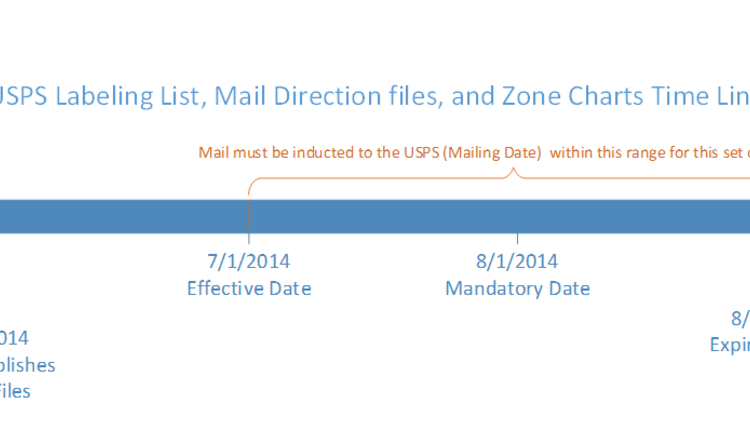In 2005, Postmaster John Potter presented the 2005 - 2010 Transformation Plan for the USPS. At the time, Intelligent Mail barcodes were still just being considered, List Certification was an emerging concept, and reducing Undeliverable As Addressed (UAA) mail was a major challenge to the industry. Here we are now, beginning to wrap up 2011, and yet many of the challenges in that Transformation Plan are still facing us. However, now we are also facing the dire situation of rapidly declining mail volumes, increased competitive pressure from alternative communication methods and a DMM that is as dynamically changing and complex as ever. Certainly not the type of transformation I think anyone could have predicted.
Yet, our industry is indeed transforming. Print, mail and communication in general are dramatically different now than they were even a decade ago. As we are all aware, these changes very much affect the mailing industry, but we must not lose sight of the fact that they resonate within the technology and users of technology as well. The challenge we as software and technology providers face is making sure that we keep pace with emerging technology and seek both a complementary as well as competitive approach for direct mail. The overall goal is still the same - making every mailpiece count.
One of the major transformations we're seeing in software and technology providers is a move to cloud-based computing. In a cloud-based environment, there is no software at the client site other than perhaps a web browser. The Internet is the gateway to the software and users typically subscribe on a pay-as-you-go approach. The benefits touted in cloud computing are a lower upfront investment in software; no need for the end user to apply software updates; and often a lower total cost for computer hardware, meaning a reduced IT budget.
The risks to cloud-based computing, however, are something the mailing industry needs to seriously consider before jumping too quickly into this technology transformation. The first and perhaps most obvious is access to the Internet. While becoming pretty ubiquitous throughout the industry, access to the Internet is essential for cloud-based computing. If the connection goes down or is having bandwidth issues, you will not have access to mission critical systems.
Another risk to consider with cloud-based computing is data security. Financial, healthcare, and insurance companies may have serious concerns with allowing their data to be processed offsite and through the Internet. Secure file transfer protocols are continually improving, but so are the efforts of nefarious individuals who are actively seeking new ways to steal sensitive consumer data.
Many postal software applications continue to explore a transformational bridge between both cloud-based concepts and onsite solutions through strategic partnerships. A common and well established example of this is NCOALink processing whereby data is processed remotely via a licensed service provider through the postal software application. This approach not only opens up the opportunity for change-of-address processing, but also expanding access to data quality on-demand services. List suppression, data enrichment, and advanced address correction are just some of the expanding services available for mailers who are considering transforming their mailing operations into marketing services.
Christopher Lien is President, BCC Software, Inc., a BELL + HOWELL company.
Yet, our industry is indeed transforming. Print, mail and communication in general are dramatically different now than they were even a decade ago. As we are all aware, these changes very much affect the mailing industry, but we must not lose sight of the fact that they resonate within the technology and users of technology as well. The challenge we as software and technology providers face is making sure that we keep pace with emerging technology and seek both a complementary as well as competitive approach for direct mail. The overall goal is still the same - making every mailpiece count.
One of the major transformations we're seeing in software and technology providers is a move to cloud-based computing. In a cloud-based environment, there is no software at the client site other than perhaps a web browser. The Internet is the gateway to the software and users typically subscribe on a pay-as-you-go approach. The benefits touted in cloud computing are a lower upfront investment in software; no need for the end user to apply software updates; and often a lower total cost for computer hardware, meaning a reduced IT budget.
The risks to cloud-based computing, however, are something the mailing industry needs to seriously consider before jumping too quickly into this technology transformation. The first and perhaps most obvious is access to the Internet. While becoming pretty ubiquitous throughout the industry, access to the Internet is essential for cloud-based computing. If the connection goes down or is having bandwidth issues, you will not have access to mission critical systems.
Another risk to consider with cloud-based computing is data security. Financial, healthcare, and insurance companies may have serious concerns with allowing their data to be processed offsite and through the Internet. Secure file transfer protocols are continually improving, but so are the efforts of nefarious individuals who are actively seeking new ways to steal sensitive consumer data.
Many postal software applications continue to explore a transformational bridge between both cloud-based concepts and onsite solutions through strategic partnerships. A common and well established example of this is NCOALink processing whereby data is processed remotely via a licensed service provider through the postal software application. This approach not only opens up the opportunity for change-of-address processing, but also expanding access to data quality on-demand services. List suppression, data enrichment, and advanced address correction are just some of the expanding services available for mailers who are considering transforming their mailing operations into marketing services.
Christopher Lien is President, BCC Software, Inc., a BELL + HOWELL company.





